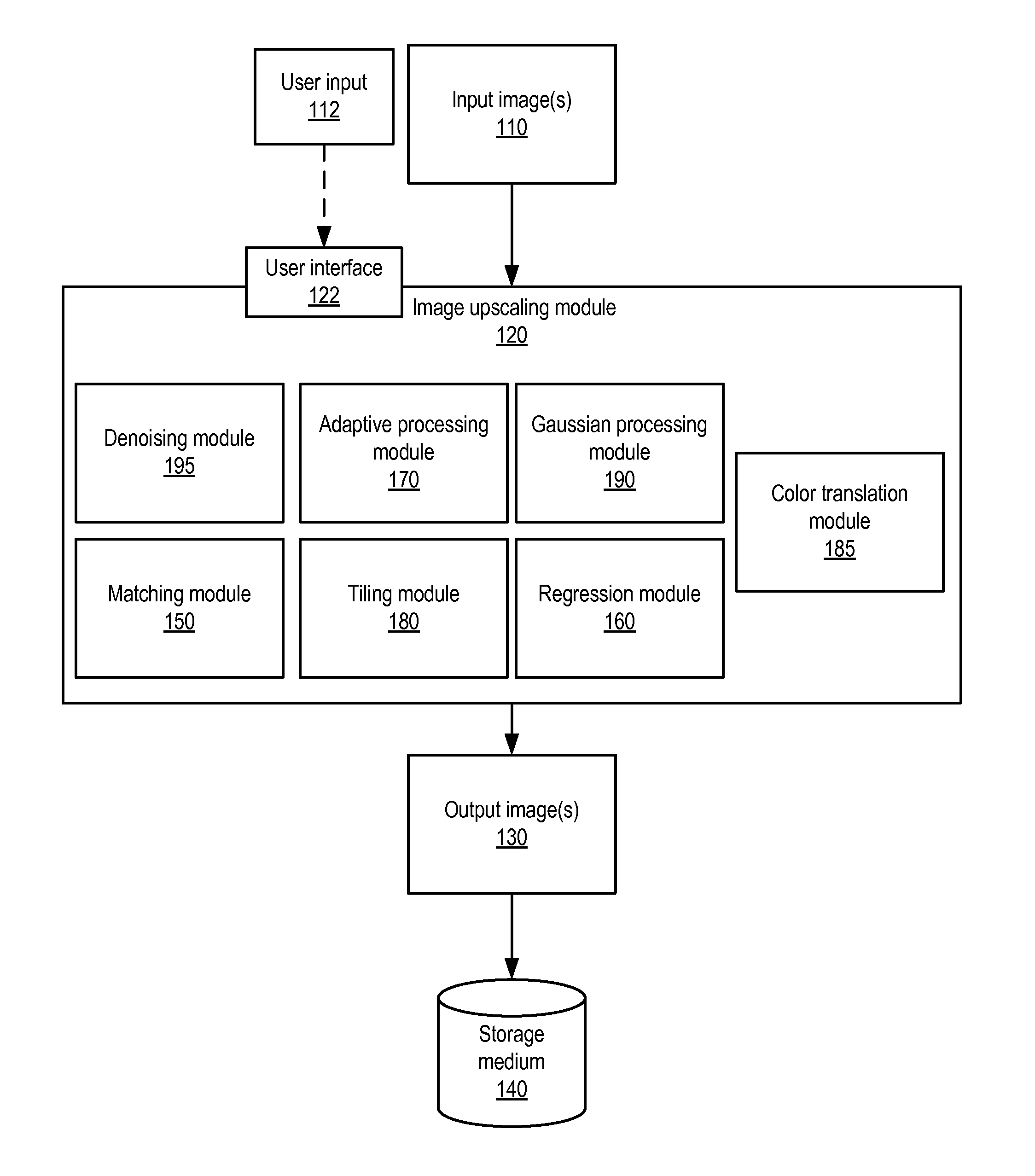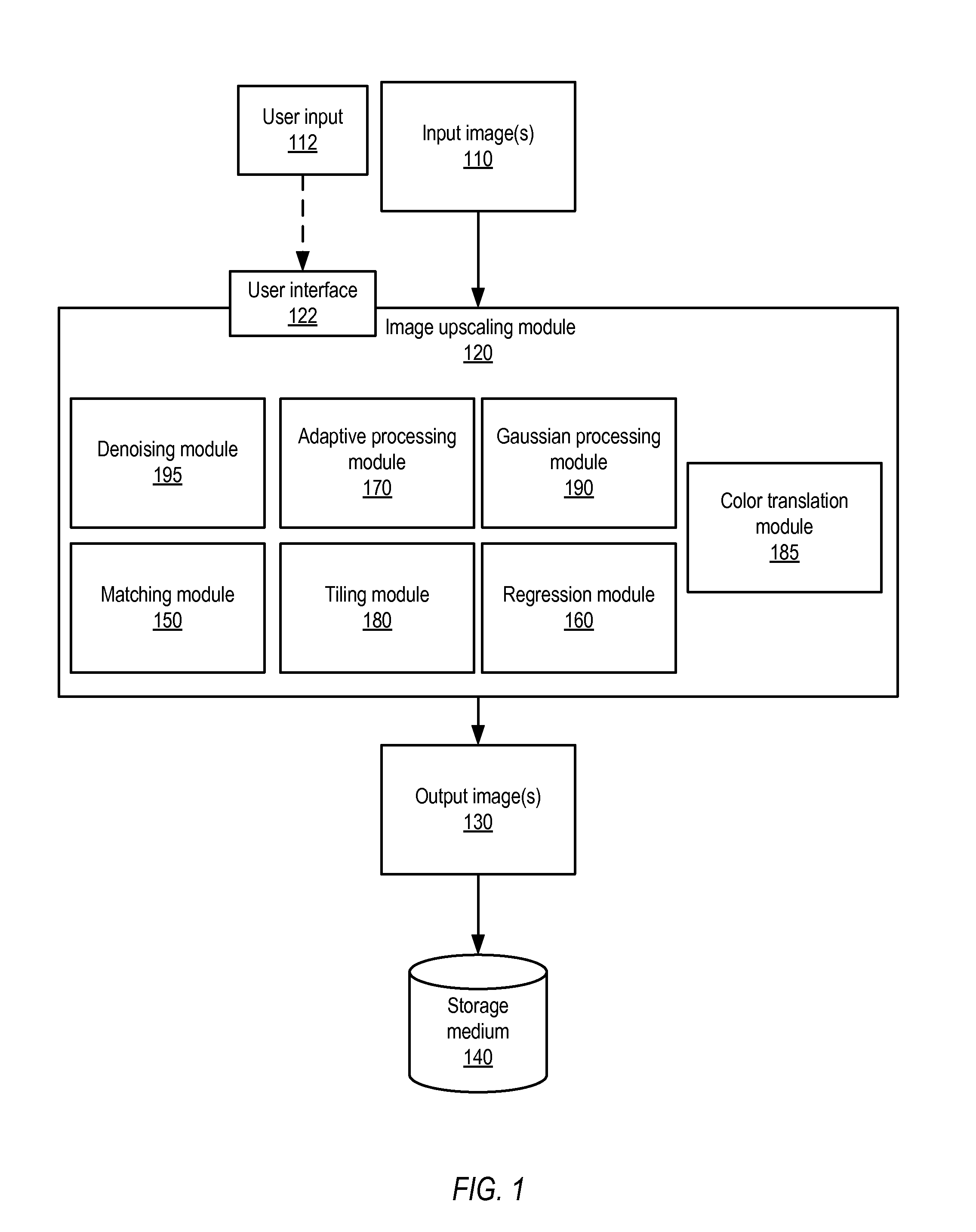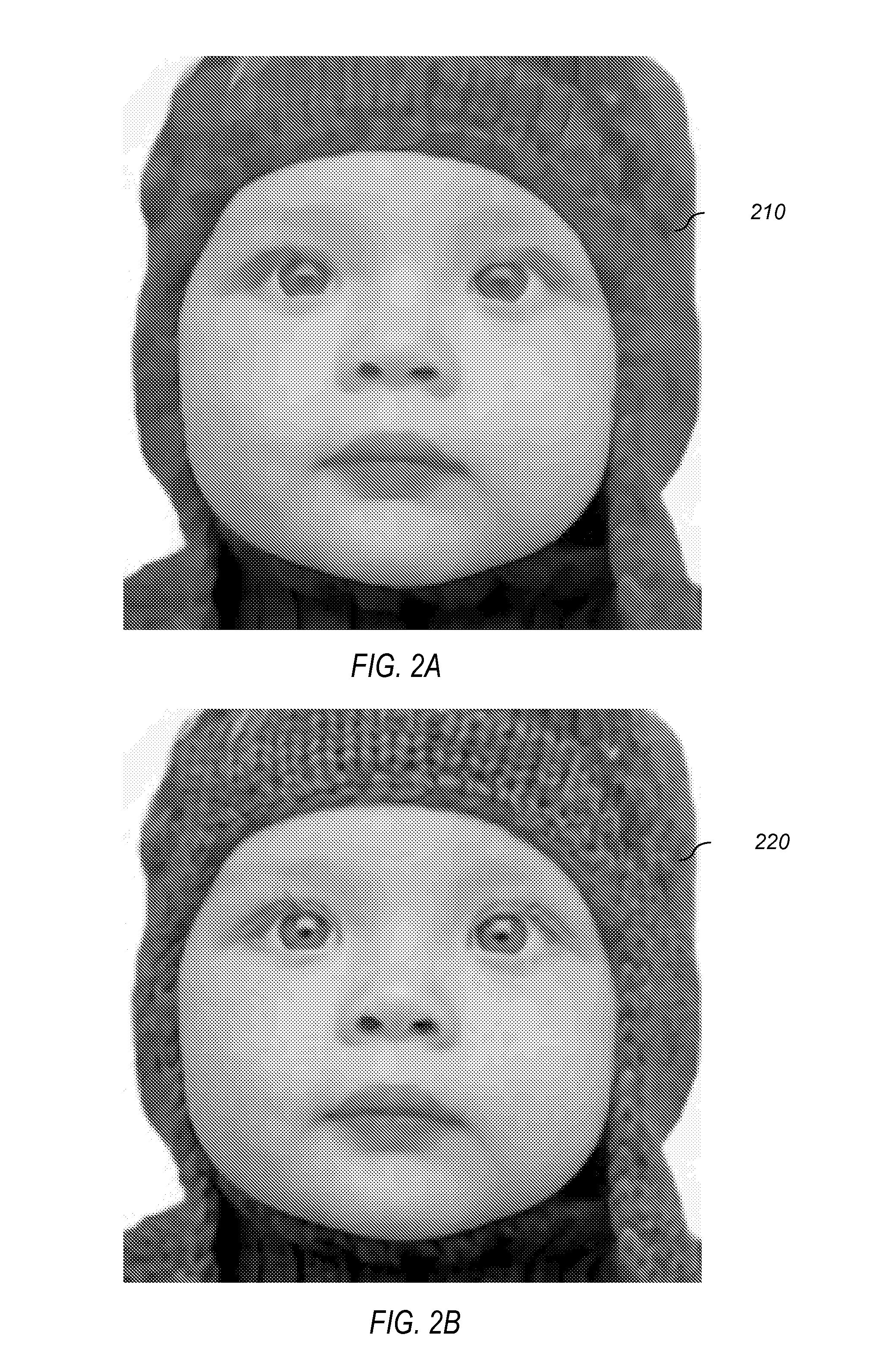Regression-Based Learning Model for Image Upscaling
a learning model and learning model technology, applied in the field of regression-based learning model for image upscaling, can solve problems such as dramatic under-constrained problems
- Summary
- Abstract
- Description
- Claims
- Application Information
AI Technical Summary
Benefits of technology
Problems solved by technology
Method used
Image
Examples
example implementations
[0058]FIG. 1 illustrates an image upscaling module that may implement one or more of the robust patch regression based on in-place self-similarity for image upscaling techniques and tools illustrated in FIGS. 2 through 10. Image upscaling module 120 may, for example, implement one or more of an image upscaling tool, an image denoising, an artifact removal tool, or an integrated upscaling and denoising tool. FIG. 11 illustrates an example computer system on which embodiments of module 120 may be implemented. Module 120 receives as input one or more digital images 110. Module 120 may receive user input 112 activating one or more of an image upscaling tool, an image denoising, an artifact removal tool, or an integrated upscaling and denoising tool. Module 120 then upscales and / or denoises the input image(s) 110, according to user input 112 received via user interface 122, using the activated one or more of a matching module 150, a regression module 160, a tiling module 180, an adaptive...
example-based
Regression Model
[0065]Embodiments exploit a first-order approximation of x, because x−x0 and y−y0 are related by a locally linear function ∇ƒT (y0), which is the derivative off at location y0. For purpose of further description herein, this function is referred to as g(y0). As most of the information contained in x is explained by x0, and g is one degree of freedom simpler than ƒ, embodiments exploit the expectation that learning g can be much simpler than learning ƒ directly.
[0066]If the low-resolution image patch space Y spans a manifold on which function g is locally linear, embodiments can ascertain the function g on a set of anchor points {c1, c2, . . . , cK} sampled from Y. Note that the function values on the anchor points are easily expressed as a set of matrices, i.e., g(ck)εd×d, where d is the dimension of the vectorized image patch. For ease of notation, we denote Wk=g(ck). For any low resolution image patch yi0, embodiments project it to a local coordinate space spanned ...
PUM
 Login to View More
Login to View More Abstract
Description
Claims
Application Information
 Login to View More
Login to View More - R&D
- Intellectual Property
- Life Sciences
- Materials
- Tech Scout
- Unparalleled Data Quality
- Higher Quality Content
- 60% Fewer Hallucinations
Browse by: Latest US Patents, China's latest patents, Technical Efficacy Thesaurus, Application Domain, Technology Topic, Popular Technical Reports.
© 2025 PatSnap. All rights reserved.Legal|Privacy policy|Modern Slavery Act Transparency Statement|Sitemap|About US| Contact US: help@patsnap.com



